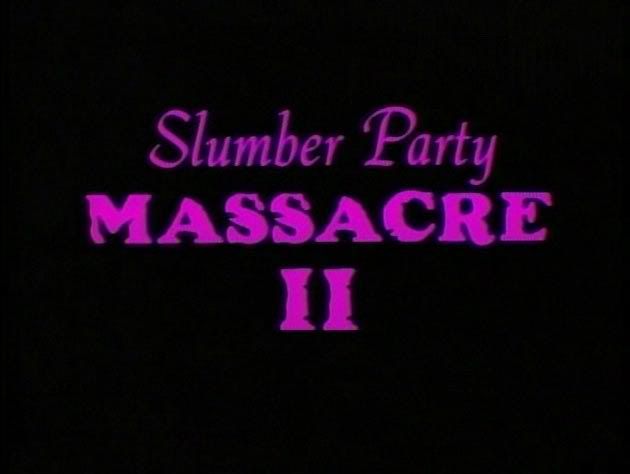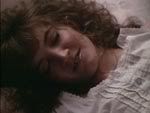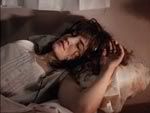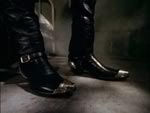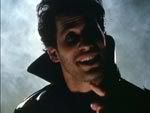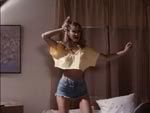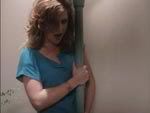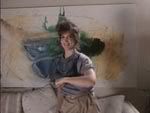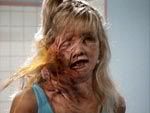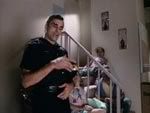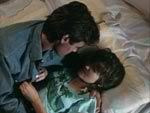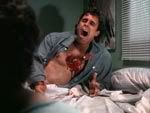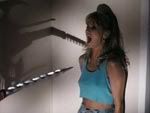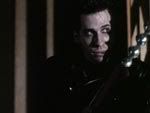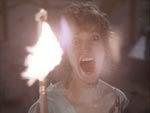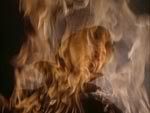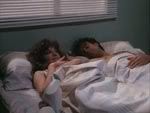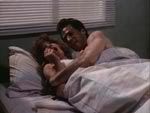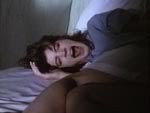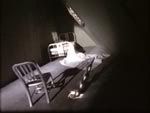The Wynorski Project Part Eight & Nine Concluded
The Wynorski Project
Part 8 and 9
Sorority House Massacre II & Hard to Die
Part Three
Last week I discussed my belief that by completely stripping his films of any discernable subtext, Wynorski ended up producing works that are ultimately guilty of every criticism (usually unfairly) thrown at the slasher genre. For all his humorous riffing, the results are every bit as misogynist and misanthropic as most ignorant people incorrectly believe horror films to be.
What I didn’t say is that despite (or—more accurately—because of) this the two films are compulsively and irresistibly watchable. As disdainful as Wynorski seems to be of his audience, there’s no denying that he’s giving them massive heaps of what they want. The overt sexuality of the films goes beyond mere prurience to pornographic excess, but the quality of that excess is such that it’s very hard to look away. Wynorski clearly knows this. ‘Give ‘em enough T&A and they’ll forgive you anything,’ being the apparent unspoken motto that defines much of his work.
But is he truly at peace with this? After watching his brief cameo in Hard to Die this becomes a legitimate question. The scene in question occurs when two detectives (who only appear in the film because they also appeared in Sorority House Massacre II and no one could be bothered to figure out how to get rid of them in the rewritten script) break in on a porno shoot to interview an adult film actress (Wynorski regular, Monique Gabrielle, who appears twice in the movie—billed first as“Carolet Girard” in the part of the porn star and then as “Lucy Burnett” for the part of a homely Chinese food delivery woman, which is very similar to her short cameo in Not of This Earth. Two years later she would play the final girl in Fred Olen Ray’s Evil Toons, which is as much a remake of SHMII as HtoD is) who used to work at the lingerie company where all the mayhem is occurring.
Playing the part of the exasperated director is Wynorski himself, who—when accused of making “pornography”—defends himself by saying “…It’s tough enough making a picture these days without making certain—shall we say— ‘concessions’ to public taste….” On the face of it, it would seem like he’s winking at his audience again. Giving them an in-joke they can chuckle over and appreciate for its self-deprecating irony, but this ignores the fact that when the movie was made in 1990 Wynorski was still a fairly anonymous Corman hack who most genre fans wouldn’t recognize in a police line-up, much less in an in-joke cameo.
This makes me wonder if maybe he cast himself as the pornographer not because a handful of Corman insiders would find it amusing, but as a form of cinematic Freudian slip. Is it possible that Wynorski really imagines himself as an artist forced to debase himself to satisfy the public’s need for sex and violence?
Probably not, but it will be interesting to see if any similar cameo’s are made in later productions where he abandons all pretense of respectability and just flat out makes softcore porn (see future reviews of The Bare Wench Project 1, 2 & 3). I am willing to give him the benefit of the doubt and assume the cameo is just a goof, but it’s the kind of goof pretentious asshole reviewers like me cannot help themselves from grasping on.
Beyond Wynorski’s cameo, though, the other interesting part about this scene is that it is clearly based on the scene in SHMII where the same two cops (the female half of whom is played by Wynorski regular Toni Naples, working under the name Karen Chorak) go to a strip club to talk to the younger sister of the girl who killed the maniac whose spirit is causing all of the mayhem back at the sorority house.
Watching as a hyper-aware genre-enthusiast, it was this scene that caused my brain to start doing backflips, because with it Wynorski manages to take SHMII and turn it from being an unrelated in-name-only sequel to Sorority House Massacre into an alternative universe sequel to Slumber Party Massacre, from which the flashback footage is taken. Having at that point already written about Slumber Party Massacre II (rather successfully—if a comment made at the 37 minute point of this YouTube video is to be believed) I was dumbfounded to see Wynorski take the character Deborah Brock had cast as a virginal member of an all-girl pop band into a slutty, fishnet clad stripper.

As unintentional as this had to be on Wynorski’s part, it does force an inevitable comparison between his and Brock’s takes on the slasher genre and it’s one where he definitely does not come out on top. Whereas Brock was able to make the first slasher film that was set entirely in the pov consciousness of a young woman’s mind, Wynorski was only able to deliver a film that aims for moronic parody and fails.
More telling, though, is the profession chosen for the character in SHMII. The fact is that in a film already so full of gratuitous nudity the strip club sequence is by far the unnecessary and redundant. Knowing what I do about his previous work, I suspect both it and the rest of the police sequences were added late to the script when it became evident the original draft was too short. I’d even guess they were shot long after the film was first completed, were it not for the fact that the same scenes are all essentially replicated in Hard To Die, making this scenario highly unlikely.
Whatever the reason for the sequence, it speaks volumes about who Wynorski is as a person and filmmaker that in his universe, this character turns out to be a stripper. Brock imagined an innocent girl driven to insanity by her horrific experience, while her Corman co-hort simply saw an opportunity to add another pair of tits into the mix.
I strongly suspect that out there is an alternative universe where I prefer his take on the material over hers, but only Uatu truly knows.
Okay, so that’s it for these two flicks. Next week I’ll discuss a more serious work in the Wynorski canon that the director has gone on record as stating that he personally hates.
Next Week
The Haunting of Morella






